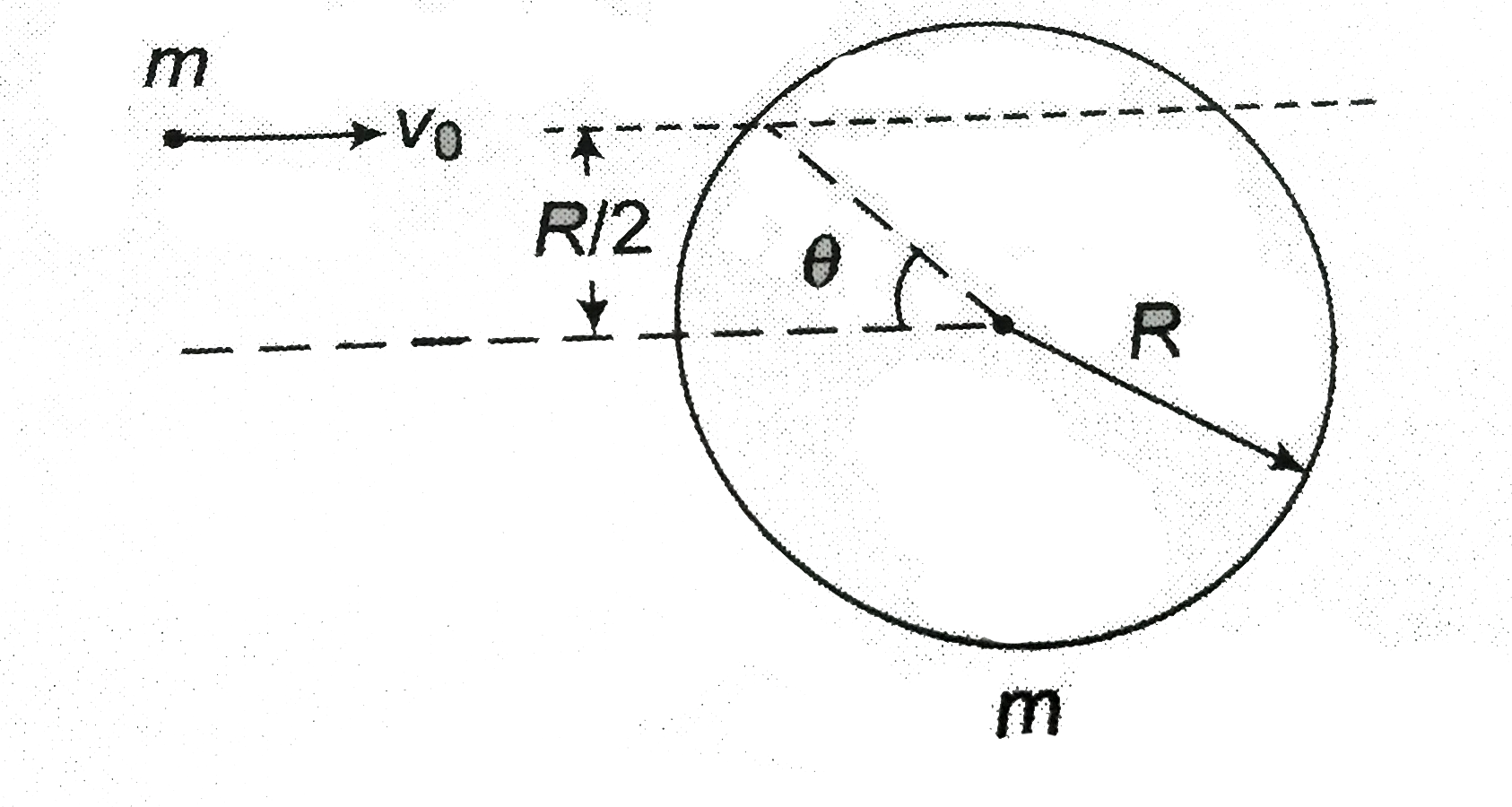A particle of mass m1 moving with velocity v collides with a mass m2 at rest, then they get embedded. Just after collision, velocity of the system
increases
decreases
remains constant
becomes zero
The correct Answer is:B
To solve the problem of a particle of mass m1 moving with velocity v colliding with a mass m2 at rest, and then getting embedded, we will use the principle of conservation of momentum.
1. Identify the Initial Momentum:
- The initial momentum of the system before the collision can be calculated using the formula:
Pinitial=m1⋅v+m2⋅0
- Since mass m2 is at rest, its contribution to the initial momentum is zero. Therefore:
Pinitial=m1⋅v
2. Identify the Final Momentum:
- After the collision, the two masses m1 and m2 get embedded and move together with a common velocity v′. The final momentum of the system is:
Pfinal=(m1+m2)⋅v′
3. Apply Conservation of Momentum:
- According to the law of conservation of momentum, the total momentum before the collision is equal to the total momentum after the collision:
Pinitial=Pfinal
- Substituting the expressions for initial and final momentum:
m1⋅v=(m1+m2)⋅v′
4. Solve for the Final Velocity v′:
- Rearranging the equation to solve for v′:
v′=m1⋅vm1+m2
5. Interpret the Result:
- The final velocity v′ is a fraction of the initial velocity v. Since m1+m2 is greater than m1, it follows that:
v′<v
- This indicates that the velocity of the system after the collision is less than the initial velocity of m1.
Final Answer:
The velocity of the system just after the collision is:
v′=m1⋅vm1+m2
- The initial momentum of the system before the collision can be calculated using the formula:
Pinitial=m1⋅v+m2⋅0
- Since mass m2 is at rest, its contribution to the initial momentum is zero. Therefore:
Pinitial=m1⋅v
- After the collision, the two masses m1 and m2 get embedded and move together with a common velocity v′. The final momentum of the system is:
Pfinal=(m1+m2)⋅v′
- According to the law of conservation of momentum, the total momentum before the collision is equal to the total momentum after the collision:
Pinitial=Pfinal
- Substituting the expressions for initial and final momentum:
m1⋅v=(m1+m2)⋅v′
- Rearranging the equation to solve for v′:
v′=m1⋅vm1+m2
- The final velocity v′ is a fraction of the initial velocity v. Since m1+m2 is greater than m1, it follows that:
v′<v
- This indicates that the velocity of the system after the collision is less than the initial velocity of m1.
The velocity of the system just after the collision is:
v′=m1⋅vm1+m2
Topper's Solved these Questions
Similar Questions
A particle of mass m moving with velocity v0 collides with sphere of same mass at rest , as shown. If the surface of contact is smooth and the collision is elastic, find the velocities of particle and sphere after the collision.

View SolutionA particle of mass m moving with velocity u collides elastically head on with a particle of mass 2m at rest. After collision the heavier particle moves with velocity?
View Solution
Knowledge Check
A body of mass m1 moving with uniform velocity of 40 m/s collides with another mass m2 at rest and then the two together begin to moe wit h uniform velocity of 30 m/s. the ratio of their masses m1m2 is
A0.75B1.33C3.0D4.0A body of mass m1 is moving with a velocity V. it collides with another stationary body of mass m2. They get embedded. At the point of collision, the velocity of the system.
AIncreasesBDecreases but does not become zeroCRemains sameDBecome zeroA body of mass m1 is moving with a velocity V. it collides with another stationary body of mass m2. They get embedded. At the point of collision, the velocity of the system.
AincreasesBdecreases but does not become zeroCremains sameDbecome zero
A particle of mass m1 moving with a velocity of 5 ms−1 collides head on with a stationary particle of mass m2. After collision both the particle move with a common velocity of 4ms−1then the value of m1/m2is :
View SolutionA body of mass m1 moving with a velocity 3m/s collides with another body at rest of m2 . After collision the velocities of the two bodies are 2m/s and 5m/s , respectively , along the direction of motion of m1. The ratio m1/m2 is
View SolutionA body of mass m moving with velocity 3km/h collides with a body of mass 2m at rest. Now, the coalesced mass starts to move with a velocity
View SolutionA body of mass m1 moving with a velocity 3m/s collides with another body at rest of m2 . After collision the velocities of the two bodies are 2m/s and 5m/s , respectively , along the direction of motion of m1. The ratio m1/m2 is
View SolutionA body of mass m moving with velocity 4 km/h collides with a body of mass 3 m at rest. Now the coalesced mass starts to move with a velocity of:
View Solution
